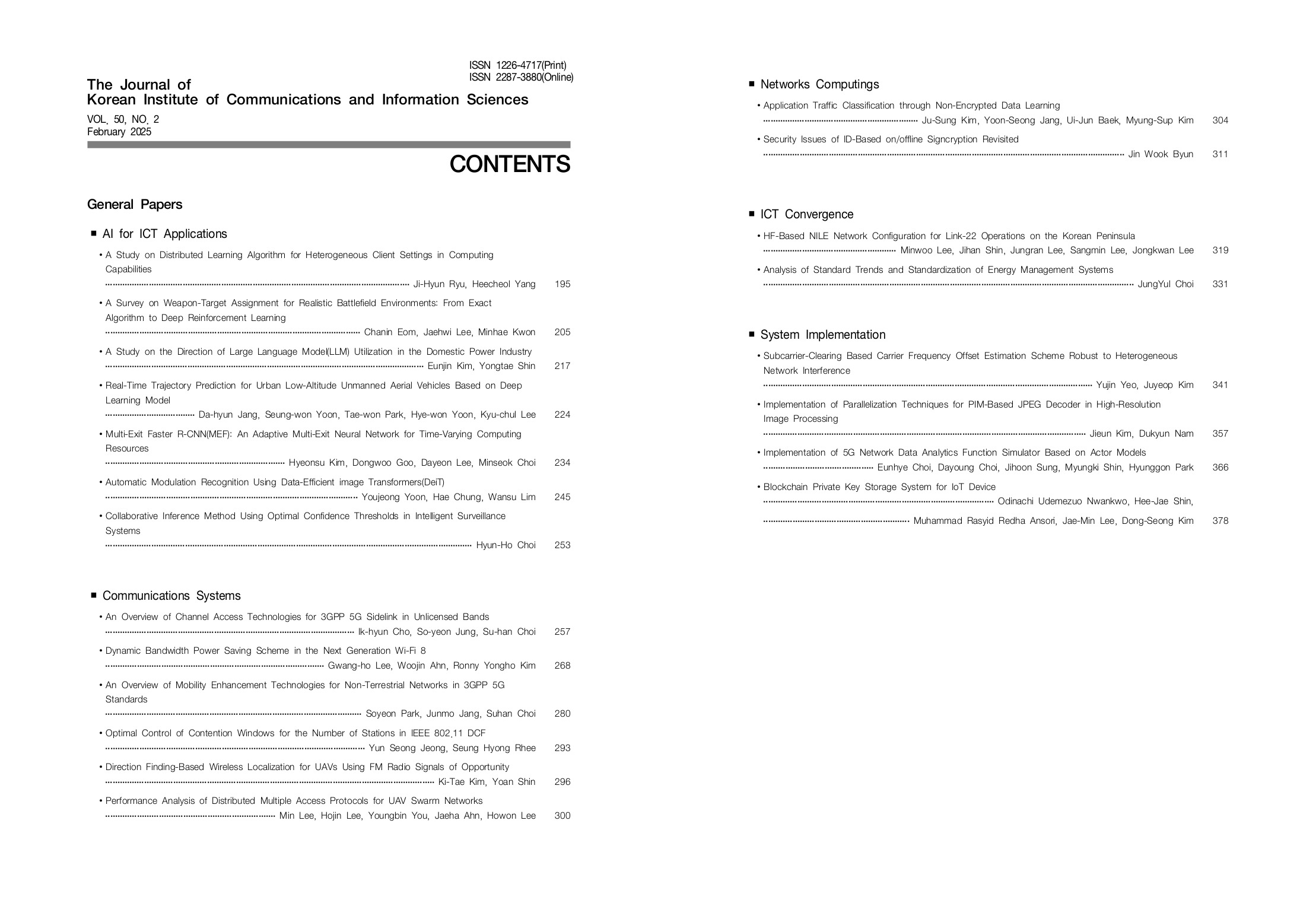Optimal Control of Contention Windows for the Number of Stations in IEEE 802.11 DCF
Vol. 50, No. 2, pp. 293-295, Feb. 2025
 10.7840/kics.2025.50.2.293
10.7840/kics.2025.50.2.293
PDF Full-Text
Abstract
Statistics
Cumulative Counts from November, 2022
Multiple requests among the same browser session are counted as one view. If you mouse over a chart, the values of data points will be shown.
Multiple requests among the same browser session are counted as one view. If you mouse over a chart, the values of data points will be shown.
|
|
Cite this article
[IEEE Style]
Y. S. Jeong and S. H. Rhee, "Optimal Control of Contention Windows for the Number of Stations in IEEE 802.11 DCF," The Journal of Korean Institute of Communications and Information Sciences, vol. 50, no. 2, pp. 293-295, 2025. DOI: 10.7840/kics.2025.50.2.293.
[ACM Style]
Yun Seong Jeong and Seung Hyong Rhee. 2025. Optimal Control of Contention Windows for the Number of Stations in IEEE 802.11 DCF. The Journal of Korean Institute of Communications and Information Sciences, 50, 2, (2025), 293-295. DOI: 10.7840/kics.2025.50.2.293.
[KICS Style]
Yun Seong Jeong and Seung Hyong Rhee, "Optimal Control of Contention Windows for the Number of Stations in IEEE 802.11 DCF," The Journal of Korean Institute of Communications and Information Sciences, vol. 50, no. 2, pp. 293-295, 2. 2025. (https://doi.org/10.7840/kics.2025.50.2.293)
Vol. 50, No. 2 Index



